Siege of Constantinople BnF MS Fr 9087
In France, it is possible (but not certain) that this photographic reproduction is copyrighted by the administration who performed it, i.e. the Bibliothèque nationale de France (BNF). However, BNF gave us the authorization to use any image from their database on our sites and CD/DVDs.
We thank BNF for its kind collaboration. This image may be consulted on the Mandragore database under the classification mark Français 9087 folio 207 verso.
See also Category:Mandragore images.Relevante Bilder

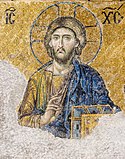




















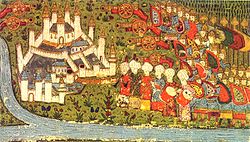



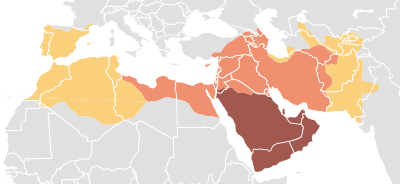








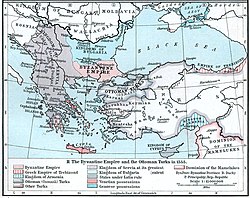



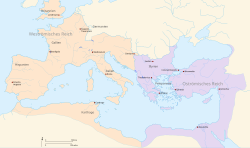


Relevante Artikel
Byzantinisches ReichDas Byzantinische Reich war die unmittelbare Fortsetzung des Römischen Reiches im östlichen Mittelmeerraum. Das Reich ging aus der Reichsteilung von 395 hervor und existierte bis zur Eroberung Konstantinopels durch die Osmanen im Jahr 1453, womit es den Untergang Westroms um fast 1000 Jahre überdauerte. .. weiterlesen
Mehmed II.Mehmed II., genannt Ebū ʾl-Fetḥ und postum Fātiḥ, war der siebte Sultan des Osmanischen Reiches. Er regierte von 1444 bis 1446 und dann von 1451 bis zu seinem Tod 1481. Am 29. Mai 1453 eroberte er Konstantinopel und besiegelte damit das Ende des Byzantinischen Reiches. Aufgrund seiner zahlreichen Eroberungen kann er neben Osman I. als zweiter Gründer des Osmanischen Reiches bezeichnet werden, für das er die territoriale, ideologische und ökonomische Basis schuf. .. weiterlesen
